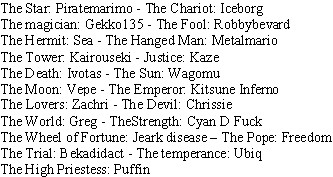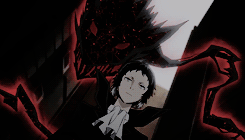@firelord111:
What is diffrence in christan sects is it mostly historical like shia and sunni in islam ?
It's complicated.
Originally there was a bunch of important centers of Christendom around the Mediterranean jostling for influence based out of major cities, like Rome, Constantinople, Alexandria and somewhere in the Levant (Acre? Tyre? I forget). And they had some differences in practice and ritual on top of also competing for influence.
Rome and Constantinople in particular were really powerful so those were the main two competing.
1. Oriental Orthodox Christians: The earliest major break that really kinda turned into sects was over some shit that is complicated even for a guy raised in a largely Christian culture like me let alone for a dude from Iran but uh… basically people started arguing over exactly what the heck Jesus was.
Like….was he a human being? A divine being? Was he a different person than God? God in human flesh? Both at once (???? confusing yes????)?
And the first split was over whether Jesus was like one being, or two beings in one.
The main areas of the Christian world agreed that Jesus was both a human being and a divine being at once. So he had "two natures". The ones who didn't agree, and thought he was basically a divine being with "one nature" (that could still have a human side anyway????) split from the others.
FIRST SPLIT results in what are now called the Oriental Orthodox Churches. Which are the Armenians, Egyptian Copts, Ethiopian and Eritrean Christians.
- Catholics and Eastern Orthodox Christians: So the competition keeps up in the other two major cities. With again rituals and doctrines developing differently on top of political power competition. And basically over a long period the church based in Rome and the one based in Constantinople grow further and further apart. And eventually that split gets made official in 1054. This divides Europe religiously between a Rome centered Western Europe, and a Constantinople centered Eastern Europe. The western church comes to be known as the Roman Catholic Church, and the eastern one comes to be known as the Eastern Orthodox Church. Or as people usually call them, Catholic and Orthodox. Yes, Eastern Orthodox sounds super similar to Oriental Orthodox :I. As to what sort of differences you can see between these two…
Catholics: There is one dude straight up in charge at the top, this is the pope I'm sure you know of. The pope is the boss of the Catholic church. All hierarchy in this church leads to him in the end.
Here's an idea of how the priests sometimes dress, their nuns, typical church architecture inside and outside.
Orthodox: There is a top guy, but he isn't all that important and doesn't hold anywhere near as much power as the pope. The Orthodox Church is much less hierarchal, with the relative power smoothed out among a variety of different sub-groups rather than one big superstructure like the Catholics have. The Orthodox church is basically divided up into a bunch of different national churches that still recognize one another as the same sect, and still all see Istanbul's church as the center point. So you have a Russian Orthodox chruch, a Greek Orthodox church, Bulgarian, Serbian, Romanian, Ukrainian, even a Cypriot one separate from the main Greek one.
The clothing and architecture can be pretty different from sub-group to sub-group but there are general themes. Namely beards, and domed churches.
Russian priest, Greek priest. Russian nun, Greek nun. Russian architecture, Greek architecture.
- Protestant Churchs (not a sect, a category of countless sects): Got all that? Good. Because now it gets really confusing.
So maybe you saw how the Catholic church seemed extra organized and centralized. Right. Now in medieval times that meant it was also a huge political power that had its influence and fingers in everything in Western Europe, not unlike your own Iran with its theocracy. It got corrupt as all hell, and was acting like a big nasty force in general. So around the 1400's people started popping up genuinely questioning its authority in Western Europe. People like John Calvin and Martin Luther. This started a huge trend of bucking the authority of the Catholic Church, and straight up eventually to rebel churches being formed that broke away from the Catholic Church. In protest, thus Protestant. Naturally the unifying factor of these rebel churches was completely dropping their recognition of Rome being their boss, and the pope no longer meant anything to them.
That's not so hard to understand I suppose.
Now understand that this meant a bunch of different sects formed around the same time, this is NOT ONE SECT. It is a category of sects, defined by breaking from the Roman church and then breaking from eachother and so on and so on….
This meant initially you had the sects of Lutherans, Calvinists, the Anglican church, and others.
And this also means that since then? A blizzard of other sects have popped out of those movements or formed next to them.... aye aye aye.
The diversity of belief in this category is insane.
You can go all the way from Anglicans who are basically Catholics in most ways except they made everything focused in England with .
I can't post pictures because it varies so much. The older Protestant groups can have styles that stay relatively consistent, again like the Anglicans have churches that look a lot (and WERE) Catholic churches. The younger ones (mostly in the US) have very un-flashy churches and plainness in general.
–- Update From New Post Merge ---
@MetaMario:
So basically, the former wants to spread love for Jesus' mom and buddies too. (Isn't the actual name Joshua? Jesus never sounded right on the tongue to me when you look at the other biblical names)
It's a real hair splitter in practice.
Catholics/Orthodox and Protestants both think Mary and the saints are cool as heck.
The difference is Protestants (well some sects) are uncomfortable with the level of focus and devotion that Catholics/Orthodox give them. They think its goes too close to levels that should be reserved for Jesus/God. The more extreme ones will straight up call it idolatry and condemn it.
But really its kind of dumb imo, because even in the super saint/Mary focused rituals of the most old world style Catholic and Orthodox churches, if you asked those people if they thought Mary and the saints were equal to God they'd laugh you out of town.





 [/hide]
[/hide] [/hide]
[/hide] [/hide]
[/hide] [/hide]
[/hide]


 "
"




 I'm actually not in the camp of "religions are a net negative". …more like "net zero"? Hahaha. :)
I'm actually not in the camp of "religions are a net negative". …more like "net zero"? Hahaha. :)



 Set Art by
Set Art by 